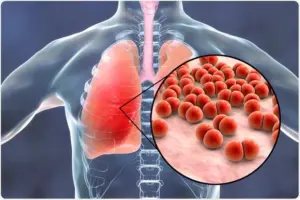
Respiratory infections refer to a broad category of illnesses that affect the respiratory system, which includes the organs and structures involved in breathing. The respiratory system plays a vital role in supplying oxygen to the body and removing carbon dioxide, ensuring the body’s overall function and well-being. However, this complex system is vulnerable to various pathogens that can cause infections and lead to a range of respiratory illnesses.
One of the most common types of respiratory infections is the common cold. Caused by different strains of viruses, such as rhinoviruses, coronaviruses, and adenoviruses, the common cold affects the upper respiratory tract, primarily the nose and throat. Symptoms of a cold often include sneezing, runny nose, sore throat, coughing, and mild fatigue. While the common cold is usually a mild and self-limiting illness, it can still cause discomfort and inconvenience, especially in vulnerable individuals such as young children, the elderly, or those with weakened immune systems.
Influenza, or the flu, is another well-known respiratory infection. It is caused by the influenza virus and typically affects the upper respiratory tract but can also lead to lower respiratory tract infections in severe cases. Influenza symptoms can range from mild to severe and include fever, body aches, fatigue, coughing, sore throat, nasal congestion, and headache. The flu can be particularly dangerous for certain populations, including young children, the elderly, pregnant women, and individuals with chronic medical conditions. Vaccination is a critical preventive measure for influenza, reducing the risk of infection and potential complications.
Pneumonia is a more serious respiratory infection that affects the lungs. It can be caused by various pathogens, including bacteria, viruses, fungi, or parasites. Pneumonia occurs when the air sacs in the lungs become inflamed and filled with fluid or pus, leading to symptoms such as coughing, chest pain, fever, difficulty breathing, and fatigue. While some cases of pneumonia can be mild and easily treatable, others can be severe and life-threatening, especially in individuals with weakened immune systems or underlying health conditions. Prompt medical intervention, including appropriate antibiotics or antiviral medications, is crucial for effective treatment.
Another notable respiratory infection is tuberculosis (TB), caused by the bacterium Mycobacterium tuberculosis. TB primarily affects the lungs but can also spread to other organs in the body. It is transmitted through the air when an infected person coughs or sneezes, making it highly contagious. Symptoms of TB include persistent cough, chest pain, weight loss, fatigue, night sweats, and fever. TB is a major global health concern, especially in countries with limited resources for early detection and treatment. Effective treatment involves a combination of antibiotics taken over an extended period, requiring strict adherence to ensure complete recovery and prevent drug resistance.
In recent times, the world has faced a significant respiratory infection outbreak, the COVID-19 pandemic, caused by the novel coronavirus SARS-CoV-2. This highly contagious virus primarily affects the respiratory system and can cause a wide range of symptoms, from mild respiratory distress to severe pneumonia and acute respiratory distress syndrome (ARDS). Common symptoms of COVID-19 include fever, cough, shortness of breath, fatigue, loss of taste or smell, and body aches. The pandemic has resulted in a global public health crisis, overwhelming healthcare systems, and causing widespread social and economic disruptions. Vaccination, adherence to preventive measures such as wearing masks, practicing hand hygiene, and maintaining physical distancing, are crucial in controlling the spread of the virus and mitigating the impact of the pandemic.
Respiratory infections can be transmitted through various routes, including respiratory droplets, direct contact with infected individuals, or touching contaminated surfaces. Factors that increase the risk of respiratory infections include close contact.


